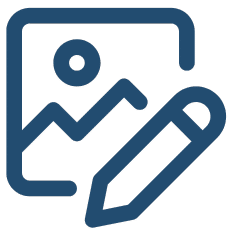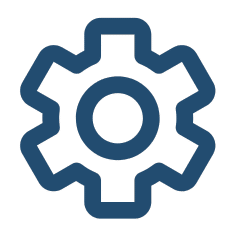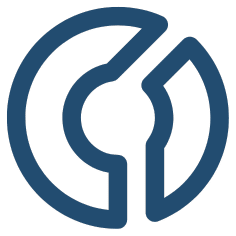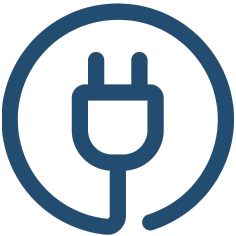Good Distribution Practices help prevent costly compliance violations and lawsuits. More importantly, they safeguard the wellbeing of consumers by reducing risk and upholding standards. In this article, I’ll explore how LMS-based online training can help your organization address EU regulations regarding GDP.
Good Distribution Practices: How LMS-Based Online Training Helps Addressing EU GDP Regulations
Every employee who is involved in the pharmaceutical distribution chain must possess the necessary knowledge and skill sets. One link in that chain who fails to comply with quality assurance standards can have widespread consequences. As a result, medicinal manufacturers and distributors must have an effective online training program in place.
One of the most cost-efficient ways to develop and deploy compliance online training is through a Learning Management System. Especially if you’re working a geographically dispersed team or multiple departments. Here are 9 ways that LMS-based online training can help your organization address EU Good Distribution Practices regulations.
1 / Ensure FDA And EMA Compliance
Learning Management Systems, such as Dokeos, give you the ability to integrate FDA and EMA compliance requirements. In the event of an audit, your organization has reports and other validation documents in one centralized location. Some Learning Management Systems even feature electronic signatures and review versions to ensure governmental compliance. Therefore, you can rest assured that your medicinal distribution company adheres to European Union compliance guidelines.
2 / Safely Store And Manage Data
eLearning authoring tools and Learning Management Systems give you the opportunity to store all of your data securely. You can upload existing online training content and repurpose it for new online training materials. As well as manage all of your corporate eLearning data. For example, LMS reports and analytics that help you track employee performance and proficiency. Thus, you are able to get a complete picture of employee completion rates, assessment scores from online training, and other actionable data.
3 / Validate And Track Employee Competencies
In traditional training environments, monitoring employee knowledge and skills involved mountains of paperwork. Such as annual evaluation reports, paper-based assessments, and questionnaires. eLearning simplifies the process and helps you validate and track employee competencies. You also have documentation for each employee that highlights their abilities, certifications, and completed coursework. As such, every member of your organization is held accountable for their own Good Distribution Practices (GDPs) online training.
4 / Provide Personalized Online Training Resources
One of the most notable advantages of online training is the power to personalize. Good Distribution Practices (GDPs) cover every aspect of the distribution chain. Including how medicinal products are packaged, transported, and delivered. That involves a number of different personnel and departments who must carry out specific tasks. For example, employees at the manufacturing center must learn how to handle and disperse the pharmaceuticals, while those at the medical facility need to know how to safely store the products in accordance with compliance protocols. Learning Management Systems help you develop and deploy personalized online training paths that focus on practical knowledge; namely, topics and tasks that employees carry out on a daily basis.
5 / Issue Compliance Online Training Certifications
Many LMS platforms feature built-in certification tools. This allows you to focus on specific Good Distribution Practices (GDPs) and compliance topics so that everyone is held to the same standard. For example, everyone in your manufacturing or transportation department must complete the cross-contamination online training module to receive the certification. This certification needs to be renewed on an annual basis to ensure that everyone is up to code. Some Learning Management systems even automatically notify employees when their certificate is about to expire. As well as recommend online training resources that refresh and reinforce key competencies.
6 / Assess Employee Knowledge And Skill Sets
Distribution Practices (GDPs) online training program. First and foremost, they give you the opportunity to intervene and offer additional support resources. For example, an employee achieves a low score on their pre-assessment. This offers a good indication of where their strengths lie, as well as their areas for improvement. As a result, you’re able to recommend online training tutorials and simulations to expand their knowledge base. Final online training assessments reveal how much they’ve learned and disclose performance and skill gaps that still remain.
7 / Provide Real World Online Training Experiences
Online training programs usually involve interactive components such as online training simulations and branching scenarios. As such, your employees are exposed to real world situations without the risk. However, these online training activities still mimic the conditions employees may find on-the-job. For example, an online training simulation involves the proper storing of pharmaceutical products. Employees must know how to handle the products and store them at safe temperatures, or which safety gear they need to wear, if necessary. This puts their knowledge into practice and tests their ability to apply their skills in real life.
8 / Identify And Improve Online Training Inefficiencies
LMS metrics reveal Good Distribution Practices (GDPs) training “pain points” that may have gone undetected before. For example, only a small percentage of your employees perform well during the online training simulation. This indicates that they either lack sufficient knowledge or experience. Or they are simply unaware of the benefits of active participation. Most LMS platforms compile the data into charts and graphs so that you can visualize trends and patterns. In response, you can create an improvement plan to improve employee engagement and provide supplemental online training aids.
9 / Incorporate Social Learning Opportunities
Last, but not least, LMS-based online training opens up a world of social learning opportunities for your distributed workforce. Every member of your team is able to communicate and collaborate with their peers to improve the Good Distribution Practices (GDPs) knowledge and experience. This also involves peer-based feedback to continually improve workplace practices. Some LMS platforms even track social and informal online training activities in the LMS. For example, employee involvement in social media groups, and corporate eLearning blogs.
LMS-based online training gives you the power to validate employee skills and maintain compliance across the board. Employees are able to access online training resources on any device. In addition, your developers can design and deploy online training courses from anywhere in the world. This allows your pharmaceutical company to streamline and secure its distribution practices to align with EU regulations.
Do you have an e-learning project ? Contact us now







































